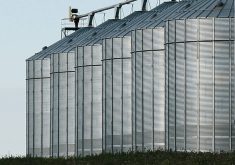SAO PAULO (Reuters) – Two Brazilian companies plan to build ethanol
producing facilities using corn as raw material, they said on Tuesday,
aiming to take advantage of ample supplies of the cereal in the
country’s center-west region.
Brazil’s ethanol industry, the world’s second largest behind the United
States, is almost entirely based on sugar cane, a raw material usually
seen as more efficient than corn. But rising demand for ethanol and
successive corn output surpluses could offer opportunities in some
regions.
Read Also

Grain trader Bunge lowers 2025 profit forecast after closing Viterra deal
U.S. grain trader and processor Bunge on Wednesday lowered its 2025 earnings forecast following its merger with Viterra, and said it is overhauling segment and volume reporting to align with its integrated operations.
Cerradinho Bioenergia SA plans to build a corn-based ethanol plant in
Goiás state with capacity to produce 230 million liters per year,
according to a statement released by the state’s press agency.
Cerradinho already owns a sugar and ethanol mill in the same location in
Goiás. It plans to invest 280 million reais (US$87.91 million) in the
project.
FS Bioenergia, which opened a large corn-based ethanol plant last year
in Lucas do Rio Verde, Mato Grosso state, said on Tuesday it will invest
US$110 million to double the current production capacity to 530 million
liters of ethanol per year.
FS Chief Executive Henrique Ubrig said in a statement that the results
so far have been very positive, prompting the decision to expand.
Ethanol sales are climbing in Brazil as consumers switch to the fuel in
the face of rising gasoline prices. Hydrous ethanol sales, the type used
as a gasoline substitute in flex fuel cars, jumped 33 percent in
November from a year earlier, according to oil and fuels regulator ANP.
Brazil has also passed legislation setting mandates for fuel
distributors to market increasing volumes of ethanol and biodiesel, in a
policy designed to increase the use of renewable energy and cut carbon
emissions.
















